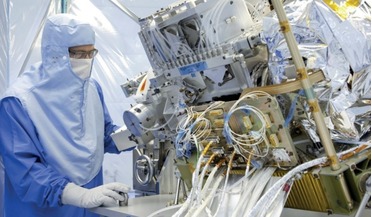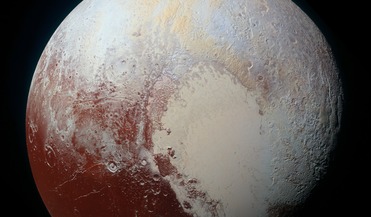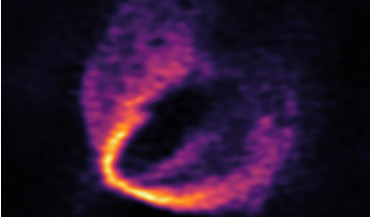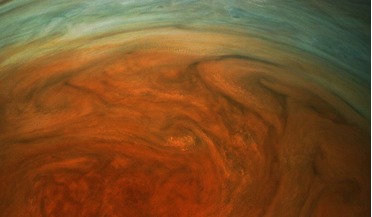 October 2017
Tracking air pollution and monitoring climate change
October 2017
Tracking air pollution and monitoring climate change
... spectral bands) - have been selected to monitor key tropospheric constituents (such as nitrogen oxides, sulphur dioxide, carbon monoxide, formaldehyde, ozone, etc) that are important products for the monitoring and forecasting of air quality. These...
 25 May 2018
New research suggests Pluto could be one giant comet
25 May 2018
New research suggests Pluto could be one giant comet
... to the theory is that if Pluto was formed by the accretion of a billion comets, then it should have an abundance of carbon monoxide (CO) too, but a study of the planet indicates a lot of CO seems to be missing – from its surface at least. To account...
 13 June 2018
Novel technique helps discover three protoplanets around newborn star
13 June 2018
Novel technique helps discover three protoplanets around newborn star
... technique that the two teams used was the study of subtle changes in the wavelength of light from carbon monoxide (CO) gas spread throughout the disc. CO emits a very distinctive millimetre-wavelength light that ALMA can observe...
 30 August 2018
Unstoppable monster galaxy puzzles and enlightens astronomers
30 August 2018
Unstoppable monster galaxy puzzles and enlightens astronomers
... unknown. So what is lurking within the colossal gaseous body of this cosmic relic? Aside from an enormous amount of carbon monoxide gas in the galaxy, the team found that there are two distinct large clouds several thousand...
 03 September 2018
Water discovered in Jupiter's Great Red Spot suggests plenty more down below
03 September 2018
Water discovered in Jupiter's Great Red Spot suggests plenty more down below
... of water have been found, the quantity is still under question. But coupled with the team’s measurements of carbon monoxide, which implies that Jupiter has 2 to 9 times more oxygen than the sun, and combined with the...
 29 October 2018
A rare discovery helps scientists measure a key process in star formation
29 October 2018
A rare discovery helps scientists measure a key process in star formation
..., molecular hydrogen, is either difficult or impossible to detect. Instead researchers often try to identify another molecule – carbon monoxide (CO) – to learn more about the processes going on in the cloud. However, it is the formation of molecular...